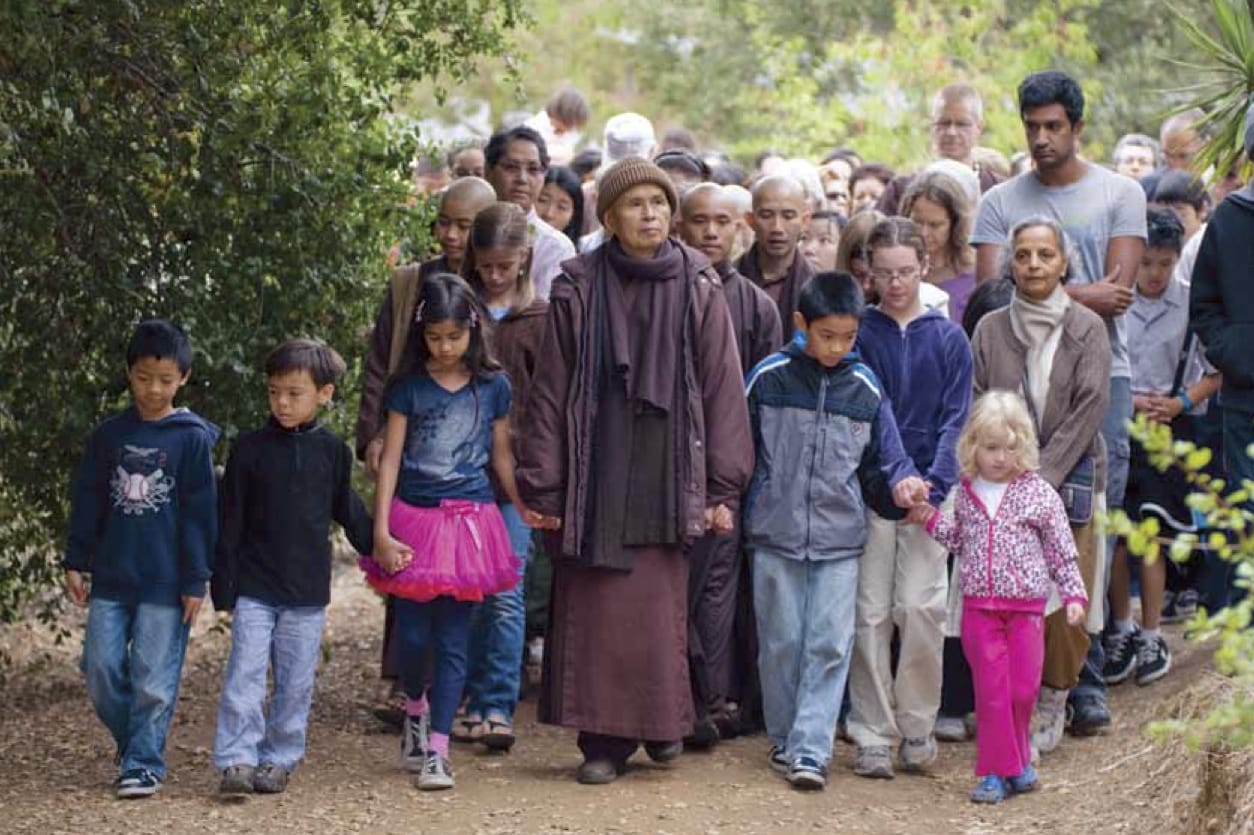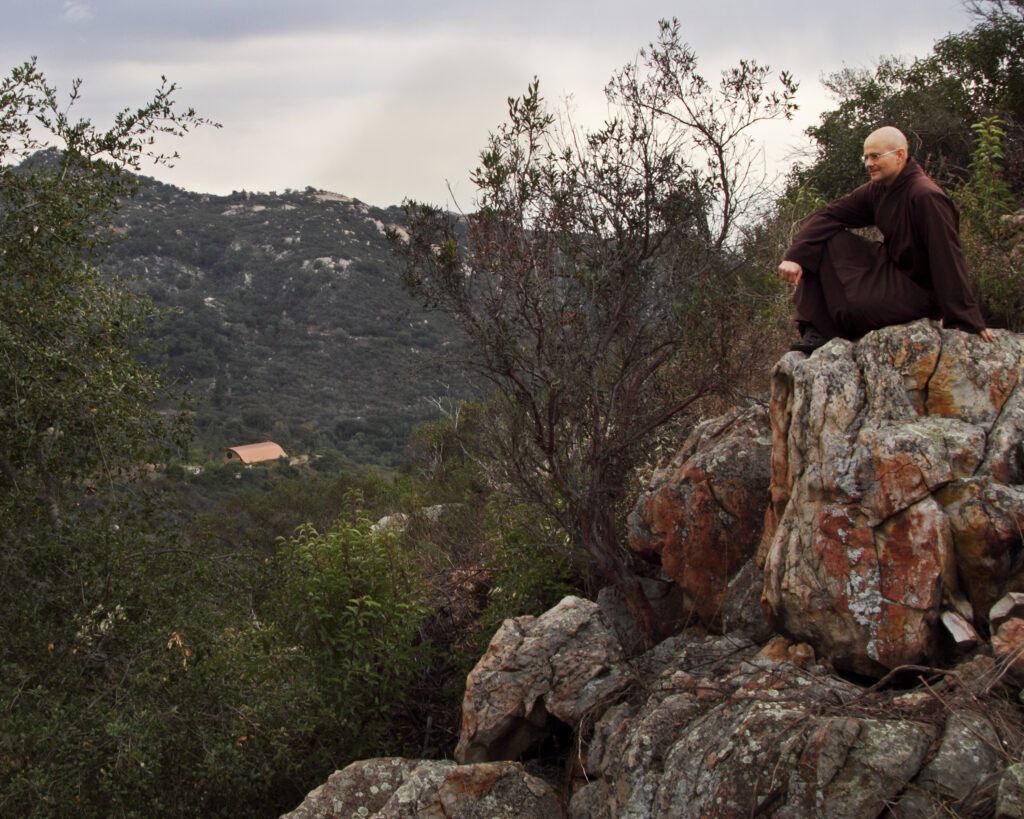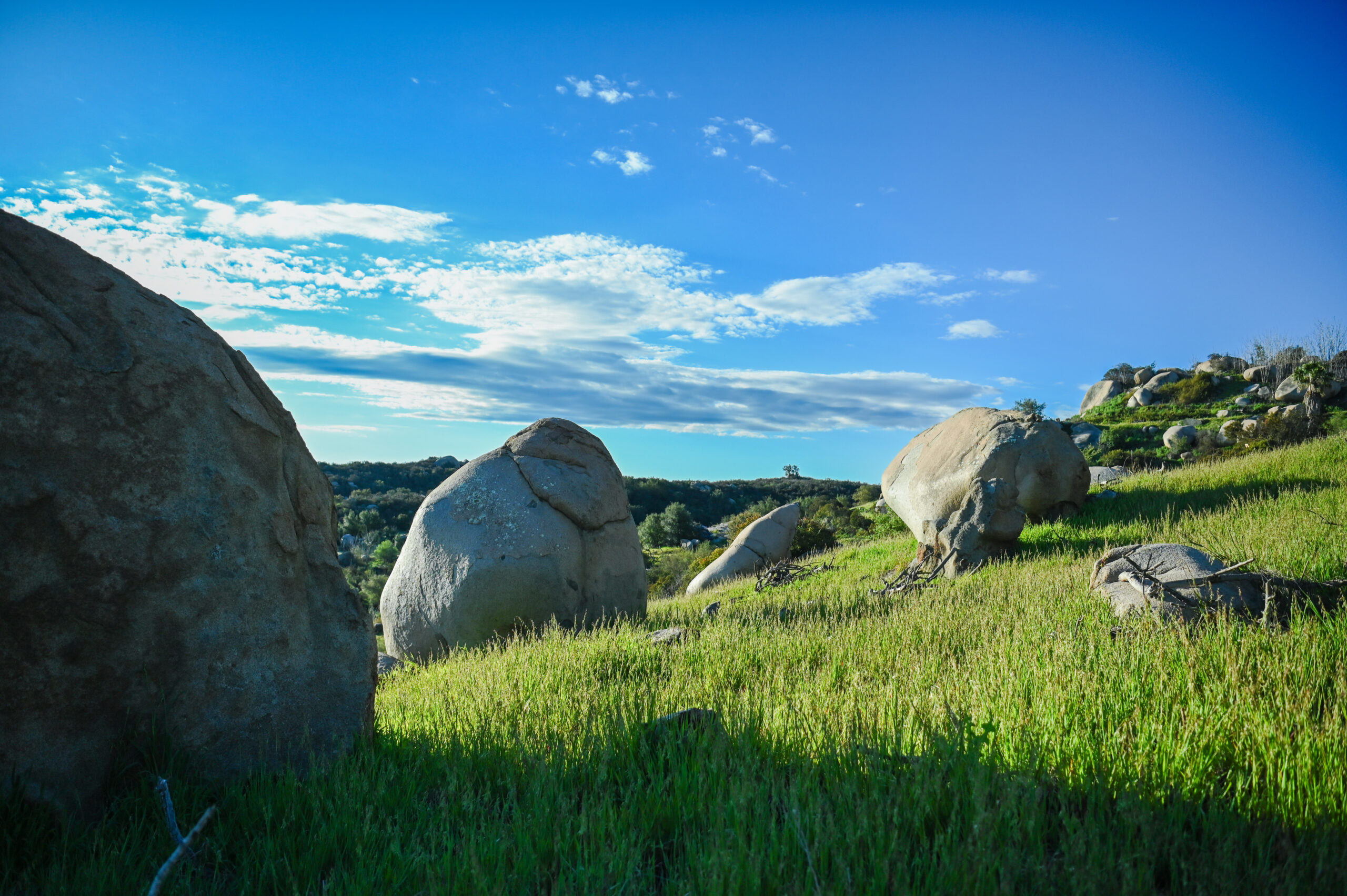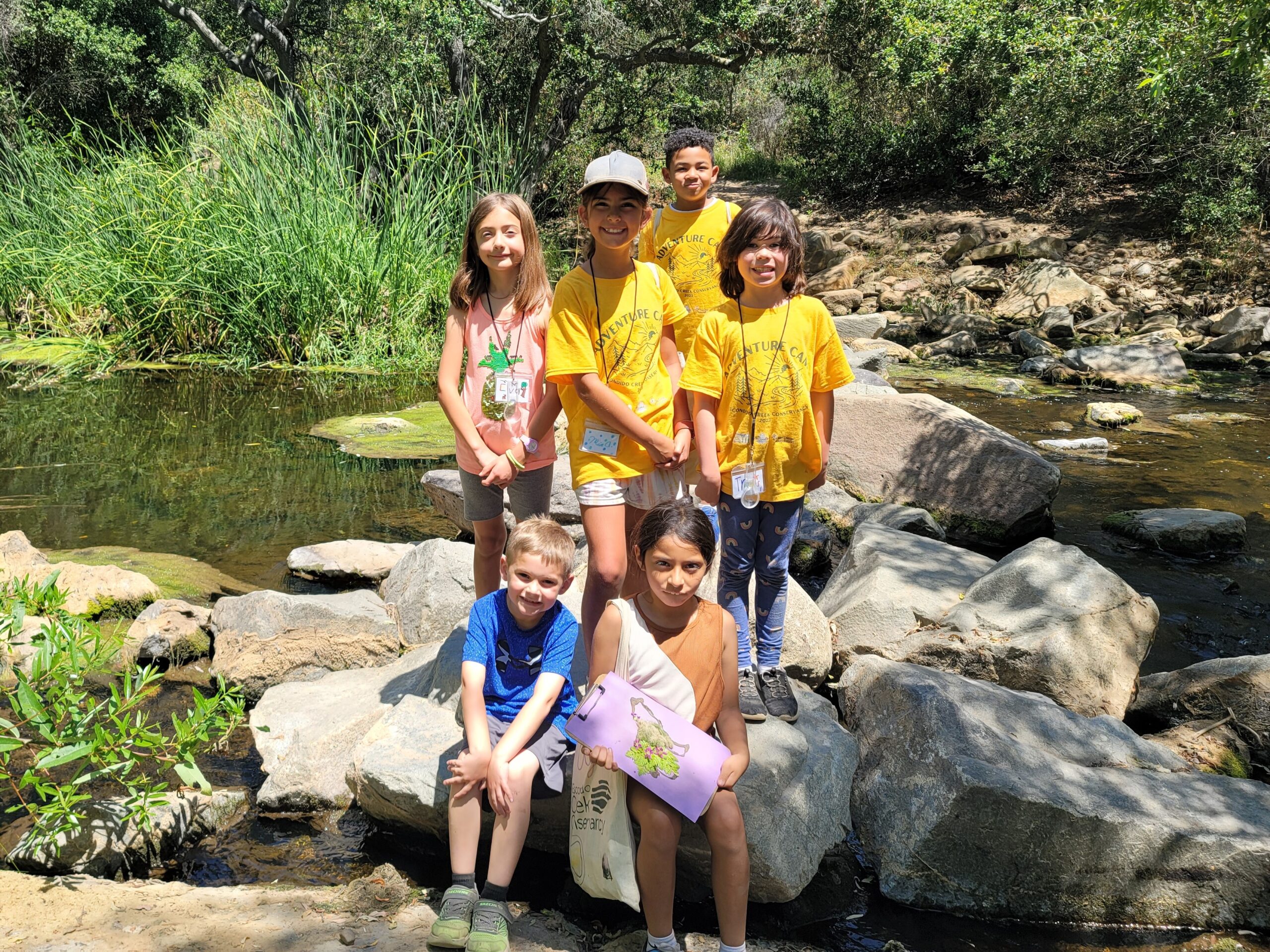
Remembering Thich Nhat Hanh
Photo credits: Ron Forster
Remembering Thich Nhat Hanh
The Deer Park Monastery shares a boundary with the MJM Ranch and Daley Ranch and is an important conservation partner of The Escondido Creek Conservancy. The Deer Park Monastery is a hidden gem of the Escondido Creek watershed. Twenty-two years ago, Vietnamese Zen Master Thich Nhat Hahn established Deer Park as a natural setting where monastics and people of all faiths could learn how to be in touch with the present moment.
Thich Nhat Hanh physically passed away last Friday at the age of 95 while residing at his root temple in Vietnam. Park, as part of the “Plum Village Community,” is holding ceremonies this week to commemorate their dear “Thay” (Vietnamese for Teacher) and recognize how he is continued through all his peaceful actions.
Thich Nhat Hanh was also a conservation leader, here and around the world. With the guidance of his monastics (and hard work by Conservancy Board Member Ron Forster and Deer Park volunteers), Deer Park had the vision to permanently protect a portion of the adjacent MJM Ranch from development. The Conservancy additionally preserved another portion of the MJM Ranch, such that today the bulk of the MJM property is now permanently protected, buffering Deer Park and Daley Ranch against urban encroachment, and providing a wildlife corridor for bobcats and other species.
“Conservancy Board members Kevin Barnard and then-Board member Jerry Harmon advised the monastery on different approaches that would benefit both the owner of the MJM Ranch while providing sanctuary for wildlife and the monastic community,” said Board member Ron Forster.
Known as the “Father of Mindfulness,” Thich Nhat Hanh introduced western cultures to the Zen Buddhist practice of bringing our attention to our breath as a way of returning to the present moment. He taught that only by looking deeply and compassionately in the present moment can we transform our understanding of past suffering or take action to affect how the future will be.
 “I had the privilege to meet Thich Nhat Hanh at Deer Park and participate, with my family, in a walking meditation,” said executive director Ann Van Leer. “Our daughter must have been about nine at the time, at that most wiggly and bouncy stage of life, and even she became calm and peaceful as we walked with hundreds of his practitioners, all silent, through the chaparral. It was magic; we will never forget the experience.”
“I had the privilege to meet Thich Nhat Hanh at Deer Park and participate, with my family, in a walking meditation,” said executive director Ann Van Leer. “Our daughter must have been about nine at the time, at that most wiggly and bouncy stage of life, and even she became calm and peaceful as we walked with hundreds of his practitioners, all silent, through the chaparral. It was magic; we will never forget the experience.”
Deer Park is a rare monastery that embraces the community. It invites the community to visit and is open most Sundays for days of mindfulness. Check the website before you go deerparkmonastery.org.
“The monastics at Deer Park are some of the most interesting people I’ve ever met,” said Conservancy Board member Kevin Barnard. “Brother Phap Ho hides a keen sense of humor behind his calm demeanor; they were a delight to work with.”
Many people have been introduced to Thich Nhat Hanh through his over 100 books. His latest book is titled “Zen and the Art of Saving the Planet.” Living in harmony with our natural environment is a core focus of his community. An example is the “Two Promises” that is offered for all ages to practice:
I vow to develop my compassion in order to live peacefully with people, animals, plants, and minerals.
I vow to develop understanding in order to protect the lives of people, animals, plants, and minerals.




